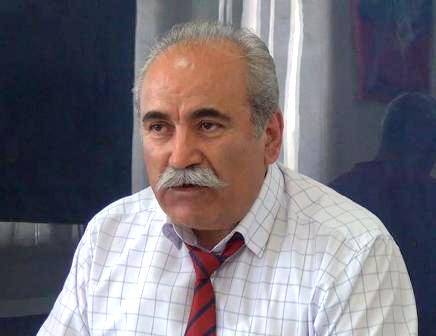 Politique Internationale – What concrete parameters on the conflict settlement were put forward by the Co-Chair countries?
Politique Internationale – What concrete parameters on the conflict settlement were put forward by the Co-Chair countries?
Edward Nalbandian – All proposals made by the Co-Chairs envisioned a package solution of the Nagorno-Karabakh problem with phased implementation in conjunction with all interrelated components of the settlement.
1). The final legal status
It was envisioned that the final legal status of Nagorno-Karabakh would be determined through a legally binding expression of will of the population of Nagorno-Karabakh. It was emphasized that the wording of the question or questions to be voted on would not be limited in any way presupposing the choice of any status. Belonging to the population of Nagorno-Karabakh that would take part in voting were considered persons of any nationality in the same proportion that had existed in Nagorno-Karabakh in 1988 according to the results of the last census held before the conflict. In that time Armenians were more than 76% of the population.
2). Interim status
Until the determination of the final legal status, Nagorno-Karabakh would receive an interim status with detailed description of all modalities including the formation and functioning of legislative, executive and local authorities, formation and functioning of courts, law enforcement forces, self-defense forces, obtaining of observer status in the OSCE as well as the right of membership in international organizations which would not see the interim status of Nagorno-Karabakh as an obstacle; conducting of external relations in the fields presupposed by the agreement, receiving of direct foreign investments, assistance of international donor organizations and foreign countries and access to international markets. In reality it meant “status quo plus”.
3). Security guarantees
The context of the interim status presupposed multilayer security guaranties: commitment of Azerbaijan to non-use of force against Nagorno-Karabakh, an international peacekeeping operation with deployment of peacekeeping forces, recognition of Armenia’s role as guarantor of Nagorno-Karabakh’s security, entrusting security by the self-defense forces of Nagorno-Karabakh, security guarantees by the Co-Chair countries as well as adoption of a special UN SC resolution aimed at fulfillment of these goals.
4). Corridor linking Nagorno-Karabakh to Armenia
Until the determination of the final status of Nagorno-Karabakh security and all questions concerning the use of the Lachin corridor were to be provisioned and solved by Nagorno-Karabakh authorities under the terms of status quo existing at the moment of the entry into force of the peace agreement. The final status and the width of this corridor were to be determined in the context of determination of the final status of Nagorno-Karabakh. In any case, the talk was not about 5 km of width but about many times wider corridor.
5). Return of territories
In the framework of the package agreement, recorded in the peace agreement on such interrelated parameters as the determination of the final status and interim status, corridor and other elements, after precise international and other guarantees and security measures including the guarantees by UN SC, after entry into force of the peace agreement, envisaged return of five districts: Agdam, Fizuli, Jabrail, Zangelan and Kubatli which were to be demilitarized and peacekeeping forces were to be deployed in these districts, i.e. in surrounding Nagorno-Karabakh territories, not in Nagorno-Karabakh proper.
Return of a non-corridor part of Lachin and Kelbajar was envisaged in connection with the agreement on the organizational issues of the free expression of the will by the population on the determination of the final status of Nagorno-Karabakh.
Nevertheless, as was stated already in the Kazan document, the sides were to aspire to coordinate these issues in such a way that the respective arrangements would be applied 5 years after the peace agreement’s entry into force.
6). The opening of communications
In the framework of implementation of the agreement about the conflict settlement the Kazan document, as well as non-papers that were made afterwards, offered to cancel all the reservations and dissenting opinions from respective international agreements which limited the freedom of
communications, lift the blockades, ensure unimpeded transportation and other communications, open all borders and communications going through the territories of all sides. During the entire negotiation process of 2008-2018 the talk was about opening in the context of a comprehensive settlement of the conflict of all communications in the whole region and not of communications between concrete districts.







